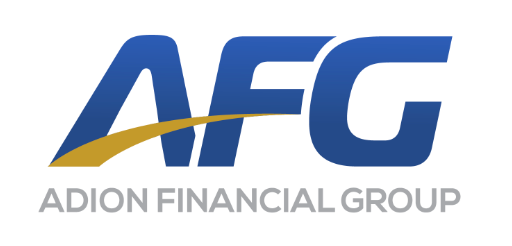
Top 3 Recommended Policies
Self-storage facilities have become an essential part of many households and businesses across the United States, offering a convenient solution for storing furniture, seasonal items, and business inventory. In Connecticut, the self-storage industry reflects national trends but also faces unique challenges, especially regarding insurance regulations and market demand. This comprehensive guide explores everything you need to know about self-storage facility insurance in Connecticut, including industry insights, regulatory considerations, and practical advice for facility owners and renters alike.
With approximately 10% of U.S. households renting self-storage units and the industry generating nearly $39 billion in revenue in 2022, understanding the insurance landscape is crucial for stakeholders in Connecticut’s evolving market. For more detailed industry statistics, GITNUXREPORT 2025 offers an excellent resource.
Understanding the Self-Storage Industry Landscape in Connecticut
The self-storage industry in Connecticut mirrors many national trends but also faces distinct regional dynamics. Nationally, the industry has enjoyed steady growth, with an annual growth rate of about 7% over the past decade and a high occupancy rate averaging around 90%. However, Connecticut’s market has seen a slowdown in demand, influenced by factors such as low housing inventory and reduced home sales, which directly impact the need for temporary storage solutions.
According to the Hartford Business Journal, self-storage facilities in Connecticut are currently experiencing a decline in demand and lower rental prices. This trend contrasts with the broader U.S. market, where self-storage remains a robust sector with high occupancy rates and increasing revenue.
Facility owners in Connecticut must navigate these market challenges carefully, balancing operational costs, occupancy rates, and insurance expenses to maintain profitability. Additionally, many operators are exploring innovative marketing strategies and customer engagement techniques to attract new clients. This includes leveraging digital platforms for advertising and offering promotions that appeal to both residential and commercial clients, ensuring they remain competitive in a tightening market.
Key Industry Statistics Relevant to Connecticut
Nationally, the average self-storage unit size is about 100 square feet, with an average cost of around $95 per month for a 10x10 unit. Facilities with climate control and upgraded security features tend to have higher occupancy rates—20% and 15% more, respectively. Over 50% of facilities offer 24/7 access, enhancing convenience for renters.
In Connecticut, these features are especially important as renters seek secure and accessible storage options amid fluctuating demand. The industry employs over 600,000 people nationwide, reflecting its economic significance. Furthermore, the rise of e-commerce has led to an increased need for storage solutions among small businesses and online retailers who require flexible space for inventory management. This shift is prompting some self-storage facilities to adapt by offering specialized services, such as logistics support and package acceptance, to cater to the evolving needs of their clientele.

Insurance Regulations and Challenges in Connecticut
One of the most significant aspects of managing a self-storage facility in Connecticut is understanding the insurance regulations that govern the industry. Unlike many other states, Connecticut’s Insurance Department has taken a cautious stance toward self-storage businesses selling insurance directly to tenants.
The department has opposed proposals allowing self-storage operators to offer insurance products to renters, citing concerns over competency requirements and regulatory oversight. This position creates a complex environment for facility owners who want to provide added value and protection to their customers but must comply with strict state regulations. Additionally, the lack of flexibility in offering insurance products can lead to missed opportunities for facility owners to differentiate themselves in a competitive market, where customer service and value-added offerings are crucial for attracting and retaining tenants.
For more on Connecticut’s regulatory approach, the Insurance Journal provides detailed coverage of the state's Insurance Department's policies.
The Rise of Captive Insurance in Connecticut
Despite these restrictions, Connecticut has seen significant growth in captive insurance, which allows businesses to self-insure through in-house insurers. As of the end of 2023, the state had 78 captive insurance companies, contributing over $1.3 million in fees and taxes to state coffers last year. This growth reflects a broader trend among businesses seeking to gain more control over their insurance costs and risk management strategies, particularly in industries that face unique challenges, such as self-storage.
This development offers an alternative pathway for self-storage facility owners and other businesses to manage risk more effectively while benefiting from favorable regulatory conditions. The state has even implemented regulations designed to facilitate the growth of captive insurance, signaling a supportive environment for innovative insurance solutions. Furthermore, captive insurance can provide tailored coverage that addresses the specific needs of self-storage operators, such as protection against liability claims or property damage, which traditional insurance products may not adequately cover. This flexibility allows businesses to create insurance solutions that align closely with their operational realities and risk profiles.
More information on Connecticut’s captive insurance industry can be found at the Stamford Advocate.
Why Insurance Matters for Self-Storage Facility Owners and Renters
Insurance is a critical component of the self-storage business model, offering protection against risks such as theft, fire, water damage, and liability claims. For facility owners, having comprehensive insurance coverage safeguards the property and business operations, while renters benefit from insurance policies that protect their stored belongings.
In Connecticut, where direct insurance sales by storage operators are limited, renters often need to seek third-party insurance providers or rely on homeowners’ or renters’ insurance policies that extend coverage to stored items. This can sometimes lead to confusion, as not all policies are created equal, and renters must carefully read the fine print to understand what is covered and what is not. Additionally, some renters may underestimate the value of their stored items, which could result in inadequate coverage in the event of a loss.
Types of Insurance Relevant to Self-Storage Facilities
Facility owners typically carry several types of insurance, including property insurance, general liability insurance, and business interruption insurance. These policies protect against physical damage to the facility, injuries occurring on-site, and loss of income due to unforeseen events. Furthermore, specialized insurance options like equipment breakdown coverage can be crucial for facilities that rely on climate control systems or security technology, ensuring that any operational hiccups do not lead to significant financial losses.
Renters, on the other hand, should consider insurance that covers the contents of their units. Since many common items stored include furniture (75%), seasonal items (60%), and business inventory (40%), protecting these possessions is essential. Policies can vary widely, with some offering replacement cost coverage while others may only provide actual cash value, which factors in depreciation. Understanding these distinctions can help renters make informed decisions about their insurance needs and ensure that they are adequately protected against potential losses.
Impact of Insurance on Occupancy and Pricing
Insurance considerations can also influence occupancy rates and rental pricing. Facilities with enhanced security and climate control features—which often require higher insurance premiums—tend to attract more renters and command higher prices. For example, climate-controlled units have a cost per square foot about 20-25% higher than standard units but see a 20% higher occupancy rate. This trend highlights the importance of investing in both security measures and insurance to create a competitive edge in the market.
In Connecticut’s competitive market, balancing these factors is key to maintaining steady occupancy and profitability. Moreover, educating potential renters about the importance of insurance can lead to increased trust and customer loyalty. Facilities that provide resources or partnerships with insurance providers can enhance the overall customer experience, making renters feel more secure about their stored items and more likely to choose that facility over others. As the self-storage industry continues to evolve, understanding the interplay between insurance, occupancy, and pricing will be crucial for both owners and renters alike.
Practical Tips for Managing Self-Storage Insurance in Connecticut
Given the unique regulatory environment and market conditions in Connecticut, facility owners should adopt strategic approaches to insurance management to protect their assets and support their customers.
Partner with Experienced Insurance Providers
Working with insurance brokers or companies familiar with Connecticut’s regulations and the self-storage industry can help owners navigate coverage options effectively. These professionals can also advise on captive insurance opportunities, which may offer cost savings and tailored risk management solutions. Additionally, leveraging the expertise of these providers can lead to better understanding of liability coverage, which is crucial in mitigating risks associated with theft, damage, or natural disasters that could affect stored items.
Educate Renters About Insurance Options
Since self-storage operators in Connecticut cannot sell insurance directly, educating renters about the importance of insuring their stored items is vital. Providing information on third-party insurance providers or encouraging renters to check their existing policies can reduce disputes and enhance customer satisfaction. Moreover, offering workshops or informational sessions can empower renters to make informed decisions about their insurance needs, ultimately fostering a sense of trust and reliability between the facility and its customers.
Invest in Security and Climate Control
Upgrading security features and offering climate-controlled units not only improve customer experience but also positively impact insurance premiums and occupancy rates. These investments can differentiate a facility in a market facing demand challenges. Moreover, implementing advanced security measures such as 24/7 surveillance cameras, gated access, and alarm systems can deter potential theft and vandalism, further safeguarding both the stored items and the facility's reputation. Climate-controlled units, on the other hand, can attract customers storing sensitive items like electronics or antiques, thus expanding the target market.
Monitor Market Trends and Adjust Pricing
With average rent increases of 3-4% per year nationally, Connecticut facility owners should stay informed about local pricing trends and adjust accordingly to remain competitive while covering insurance and operational costs. Regularly analyzing competitor pricing and occupancy rates can provide valuable insights into market dynamics, allowing owners to make data-driven decisions. Additionally, offering promotional rates or discounts during off-peak seasons can help maintain occupancy levels, ensuring consistent revenue flow while balancing the costs associated with insurance and maintenance.

The Future Outlook for Connecticut’s Self-Storage Industry and Insurance
While Connecticut’s self-storage market currently faces headwinds such as declining demand and regulatory restrictions on insurance sales, the industry remains an important part of the state’s economy. With national self-storage revenues projected to reach $58 billion globally by 2028, there is potential for growth as market conditions evolve.
Facility owners who leverage innovative insurance solutions like captive insurance and invest in value-added services are well-positioned to navigate challenges and capitalize on future opportunities. The trend towards digitalization is also reshaping the landscape, with many facilities adopting online booking systems and virtual tours to enhance customer experience. These advancements not only streamline operations but also attract a tech-savvy clientele who prefer convenience and accessibility in their storage solutions.
Staying informed about regulatory changes and industry trends will be critical for success in this dynamic environment. As the self-storage market continues to mature, operators will need to adapt their business models to meet the evolving needs of consumers, such as offering climate-controlled units for sensitive items or flexible rental agreements that cater to short-term storage needs. Additionally, the rise of urban living and downsizing trends may drive demand for self-storage facilities in metropolitan areas, presenting new opportunities for growth.
For ongoing updates on the self-storage industry and insurance developments, resources such as
GITNUXREPORT 2025 and the
Hartford Business Journal provide valuable insights. Furthermore, engaging with industry associations and attending conferences can offer networking opportunities and access to best practices that can help facility owners stay ahead of the curve in this competitive market.
Contact Us
Phone
Locations
Connecticut Location
703 Hebron Ave., 3rd Floor, Glastonbury, CT 06033
North Carolina Location
436 East 36th St., Charlotte, NC 28205


